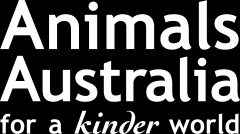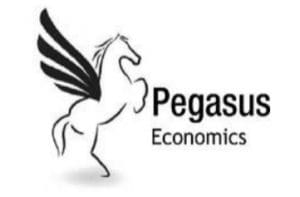 ANIMALS Australia wants Middle East live sheep exports banned from May to October, releasing an analysis suggesting the trade’s value has been overstated and its limitation has benefited mutton exports and processing sector employment.
ANIMALS Australia wants Middle East live sheep exports banned from May to October, releasing an analysis suggesting the trade’s value has been overstated and its limitation has benefited mutton exports and processing sector employment.
The Pegasus Economics report commissioned by the animal protection body also found that the live sheep export trade has a positive impact on Western Australian saleyard prices and delivers a price premium to sheep farmers for only some classes of sheep.
It also found that despite predictions, farmgate sheep prices haven’t crashed in WA, mutton exports have increased and full-time employment in WA’s meat processing sector recently reached record levels.
Animals Australia chief executive officer Glenys Oogjes has proposed the prohibition as a fourth alternative to three policy options for the Northern Hemisphere summer trade outlined in a Regulatory Impact Statement discussion paper.
The Department of Agriculture and Water Resources requested feedback on three proposed policy options for the northern summer Middle East sheep trade. Feedback submissions to a discussion paper closed on February 3 as part of a Regulation Impact Statement (RIS) process to analyse the economic and regulatory impacts of the proposed policy options, which include:
Option 1: maintain the regulatory status quo; this option represents the baseline regulatory framework.
Option 2: implement a prohibition on live sheep exports from 1 June to 14 September with additional prohibited periods for Qatar and Oman.
Option 3: implement a revised HSRA model consistent with recommendations of the HSRA Review.
The period for RIS discussion paper feedback closed earlier this month and a final government decision is expected next month.
All three options water down government commitments
Ms Oogjes said none of the options put forward by the government will actually achieve the desired outcomes outlined in the draft RIS and if adopted in isolation will constitute a significant watering down of commitments made by the government when the full extent of routine suffering on board these shipments was revealed in 2018.
“Animals Australia believes a fourth option needs to be considered that prohibits sheep shipments to or through the Middle East from May to October, and this is consistent with the position of the Australian Veterinary Association, the findings of the McCarthy review and scientists on the Technical Reference Panel.
“A revised Heat Stress Risk Assessment model should be implemented that seeks to avoid heat stress rather than merely sheep mortalities (as recommend by the McCarthy Review), as well as further reduced stocking densities,” she said.
“This position is based on the evidence, the science and years of end of voyage reports confirming the unavoidable suffering of sheep subjected to voyages to the Middle East during the Northern summer.
“The McCarthy Review was commissioned to advise on this very issue so to ignore its recommendations would not only be illogical but reckless,” Ms Oogjes said.
Pegasus analysis show live trade’s value ‘overstated’
 Ms Oogjes said the independent Pegasus analysis is just the latest in a succession of economic reports that shows the importance of the live trade to WA and individual producers has been greatly overstated.
Ms Oogjes said the independent Pegasus analysis is just the latest in a succession of economic reports that shows the importance of the live trade to WA and individual producers has been greatly overstated.
“The experience in WA since sheep exports were effectively halved in 2018 and 2019 demonstrates that farmers are adept at adjusting to changing circumstances, like any other business.
“It’s also highlighted the opportunities that emerge without the live trade, whether it be new markets or new jobs,” she said.
World sheep meat prices underpin Australian values
The Pegasus analysis found that rather than prices paid by live sheep exporters, it appears that international commodity prices for lamb and mutton are what is underwriting farm gate prices paid for Australian sheep.
“Since the effective curtailment of the live sheep export trade to the Middle East during the northern summer in 2018 and 2019, farm gate prices for WA sheep farmers have not crashed and the mutton sheep displaced from the live sheep export trade have found new export markets, predominately in China.
“This contradicts assertions to the effect that the live sheep trade underwrites WA farm gate sheep prices or provides a price floor.”
Live export price premiums average $4 a head
Pegasus also estimated the average price premiums for each of the three main categories of sheep that make up the live sheep export trade as:
– 17.8 cents per kg carcase weight (cwt) for adult wethers (i.e. wethers and young wethers), that translates to $4.16 per head
– 48.2 cents per kg cwt for hoggets, that translates to $10.36 per head
– 10.5 cents per kg cwt for lamb, that translates to $1.68 per head.
“A weighted average across the three main sheep categories suggests that live sheep exporters pay a price premium of almost 18.7 cents per kg cwt, that roughly translates to $4 per head.”
Price premiums apply only for some sheep
The Pegasus analysis found evidence to support the claim that the live sheep export trade delivers a price premium to sheep farmers, but only for some classes of sheep.
“At current export levels of around 1 million live sheep exported per annum, the cessation of the live sheep export trade would thus translate into a loss of around $4 million for WA sheep farmers from the loss of the price premium paid by live sheep exporters.
“This works out at around $936 per WA sheep farmer on average,” the analysis found.
“This represents a loss of less than 0.2 per cent of total cash receipts for specialist sheep farms and less than 0.1 per cent of total cash receipts for mixed enterprise sheep farms.
“While the temporary cessation of the live sheep export trade would reduce overall demand to some extent as those seeking to procure sheep for live export will no longer participate in the market, the price impact will be greatest in relation to sheep that are lighter and in worse condition; in other words, those least attractive to local processors.”
Live trade impact on saleyard prices positive
The Pegasus analysis found that on the basis of econometric modelling, there is evidence to suggest that live sheep exporters do have a statistically significant positive upward impact on WA saleyard sheep prices relative to the eastern states except in relation to heavy lamb.
“Based on the last week in which live sheep exporters were active in WA saleyards in December 2019, this suggests a price reduction in the order of 4.4 per cent for trade lamb, up to 9.4 per cent for restocker/feeder lamb (in real 2018-19 price terms) as compared to prices in the eastern states when the live sheep exporters are absent.”
But Pegasus said this price impact does not extend to over the hooks (OTH) sale prices for WA lamb and mutton sheep prices, as compared to New South Wales lamb and mutton sheep prices.
“While WA saleyards have delivered price premiums for mutton sheep on average around 20.4 cents per kg cwt higher than OTH sale prices over the 10-year period from 2009 to 2019, it was found that OTH WA sale prices for trade lamb have delivered a price premium on average 9.4 cents per kg cwt higher than WA saleyard prices over the same period (in real 2018-19 price terms).”
Mutton sheep slaughter has increased
The Pegasus analysis showed that with the curtailment of the live sheep export trade to the Middle East during the northern summer in 2018 and 2019, there has been a sharp increase in the slaughter of mutton sheep in trend terms, but no associated discernible change in lamb slaughter.
“With the increase in the slaughter of mutton sheep, full-time employment in the WA meat processing sector has recently reached record levels, while total hours worked is only just below the record levels set during the winter of 2016 when the slaughter of lamb peaked.
“The average level of total employment in the WA meat processing sector increased by 2300 jobs, from an average of 3400 jobs in 2017 and 2018, to 5700 jobs in 2019.”
Click here to read the Pegasus Economics report.

Animals Australia has commented on the period between May to October that they feel live sheep should not be put on ships to swelter and suffer travelling to the Middle East. Millions of Australians agree with this and feel those concerned with this trade should finally consider animal welfare, not money.
Dianne, Animals Australia in this article is trying to argue a economic argument that clearly they know very little about and even less about the processing sector in WA. If it’s feelings, I feel they and you, should mind your own. Live export remains a very good way to destock in a drought that we are currently having. Being forced to hold onto stock when water and feed are running out … is that good welfare then? This article attached is about bee, but same applies. https://www.beefcentral.com/live-export/live-export-the-greatest-drought-strategy-australia-has/?fbclid=IwAR06KRH5CK9xhjx1rOCn652I4IJ049Y4feHabzvyLrzz7zkSyJU-dS8_mxg
The price of sheep at Muchea dropped $60 at the start of the travel ban. The same week at Katanning sheep numbers dropped to 2500 from 14,000 for the previous three weeks. Historically, its been $40 when the trade is halted. Many thousands of sheep had to be held while stock water was running out in the Great Southern region. The meatworks cannot get enough workers https://www.farmonline.com.au/story/5420128/abattoir-jobs-galore-but-new-workers-are-few/?cs=5373. They rely on overseas workers, who currently are not allowed back into the country due to the coronavirus. Fletchers at Narrikup can’t get enough locals to pass a pee test and have NZ workers fly in. Over the hook prices are good, but only if you get in — waiting six weeks in January while water and feed runs out, and teeth erupt. On a 1000 sheep you would lose $40,000, not $936. Green activist economics has never been remotely grounded in actual facts. Do us all a favour and get rid of this rubbish and give it no light or oxygen.